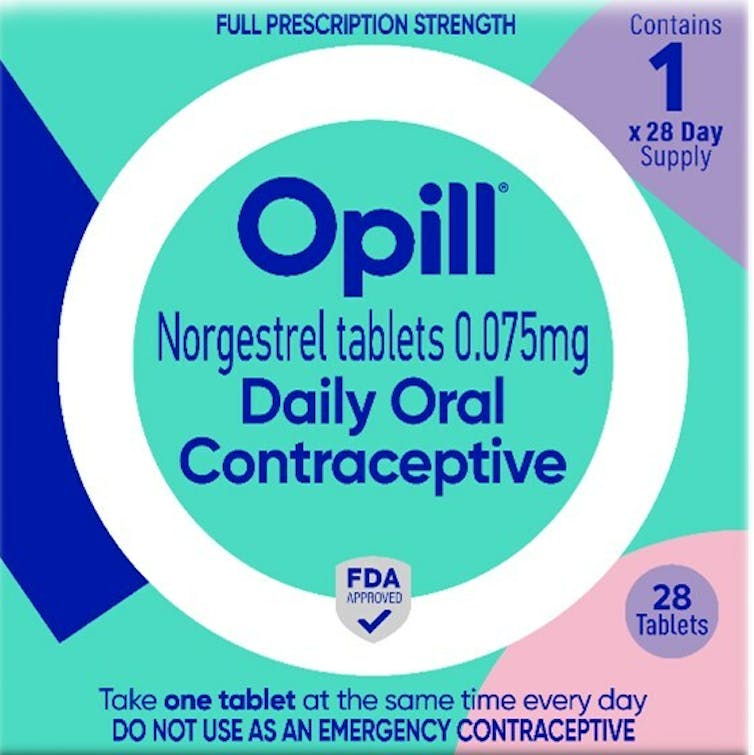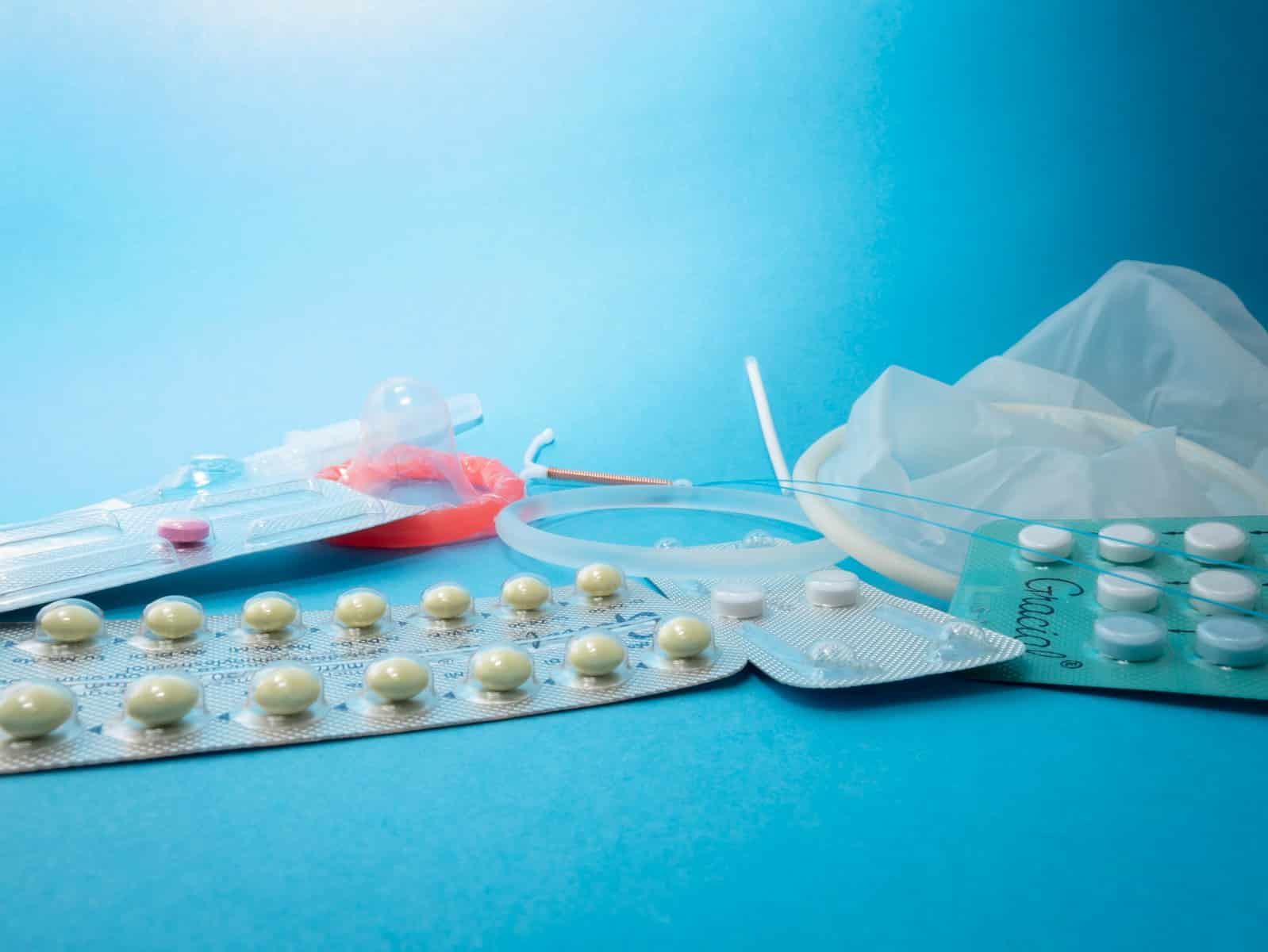Sarah Lynch, Clinical Associate Professor of Pharmacy Practice, Binghamton University, State University of New York
The Food and Drug Administration’s 2023 approval of the first over-the-counter birth control pill, called Opill, broadened the options for people seeking to prevent pregnancy.
On March 4, 2024, the pill’s manufacturer, Perrigo Company, announced that it has started shipping Opill and that consumers can expect to see it on shelves by the end of the month.
The Conversation asked Sarah Lynch, a pharmaceutical expert from Binghamton University, State University of New York, to answer some of the key questions people have about the new over-the-counter contraceptive.
How does Opill work to prevent pregnancy?
Opill contains norgestrel, which is a synthetic form of the hormone progesterone. Progesterone works in several ways to prevent pregnancy. First, it thickens the mucus in the cervix, which makes it challenging for sperm to enter the uterus and fertilize an egg. Second, it thins the lining of the uterus, making it less hospitable for a fertilized egg to implant. And third, it can prevent ovulation, or release of the egg, in most people.
Analysis of the world, from experts
Get our newsletter
Opill, like many other progestin-only birth control pills, must be taken at the same time each day to prevent pregnancy. This is because progestin levels must remain high in order to be effective.
If an Opill dose is taken even three hours late, or if vomiting or diarrhea occurs within four hours of taking the dose, a person should avoid intercourse or use some form of nonhormonal contraception for two days. Even though it only takes about two days for the drug to build up to an effective level, sperm can remain fertile in the female reproductive tract for up to five days after intercourse, meaning that it is important to take this medication regularly both before and after unprotected intercourse.
How effective is Opill?
When used exactly as instructed, Opill is 98% effective. This makes it the most effective nonprescription contraceptive option.
Effectiveness rates of contraceptives are measured in contraceptive failure. If 100 women use a birth control that is 91% effective over one year, it is estimated that nine women using that method will become pregnant over that year.
It is important to differentiate between “perfect use” and “typical use” when discussing effectiveness. “Perfect use” applies to using a method consistently and correctly, while “typical use” represents effectiveness among all people who use the method, including those who do not use it consistently or correctly. The 98% effectiveness occurred under the “perfect-use” conditions of a clinical trial. Birth control pills generally have an effectiveness of between 91% to 93% under “typical-use” conditions.

Is Opill safe to be sold over the counter?
Prior to Opill’s approval in the United States, birth control pills were already available without a prescription in more than 100 countries around the world. The same drug in Opill, norgestrel, has been used safely and effectively for birth control since 1973.
In order for a drug to be sold without a prescription in the U.S., it must first be reviewed and approved by the Food and Drug Administration. The FDA ensures that the product can meet several conditions for safe use: Consumers must be able to use it appropriately for self-diagnosed conditions; they should not need guidance from a health practitioner to use it safely and effectively; and the drug must have a low potential for misuse and abuse. The FDA also requires that over-the-counter drug manufacturers follow specific labeling requirements and include information about the drug’s use, warnings, purpose and directions.
Norgestrel has been shown to be safe for most women. However, it should not be used by those who currently have or have ever had breast cancer, because some breast cancers are hormone-sensitive and in some cases, hormones lead to increased growth of tumors. People should also not use Opill if they are pregnant or are taking certain medications used for seizures, tuberculosis, HIV/AIDs or pulmonary hypertension because norgestrel may not work as effectively when taken with these medications.Opill will be about as easy to find in stores and online as Advil.
Shouldn’t a doctor be involved in choosing birth control?
Getting a prescription for any type of hormonal contraceptive product has traditionally required a medical examination with a health care provider. Screenings may include pap test, pelvic examination, clinical breast examination and testing for sexually transmitted diseases. Although important, leading medical organizations such as the American College of Obstetricians and Gynecologists state that these screenings are not required before safely using hormonal contraception.
Even before the approval of Opill, people had the option to uncouple their screening examinations from prescription access. One way has been through telehealth. A 2018 review of several online telehealth platforms found that these companies are still able to screen for safe use and provide safe birth control recommendations without an in-person examination. In addition, more than 20 states currently allow pharmacists to provide prescription contraceptive based on a self-assessment questionnaire and blood pressure screening.
People who want to use any type of nonprescription medication should ensure that they know their medical history and what medications they take. They should carefully review the labeling information and, if they have questions, ask their pharmacist or reach out to their primary care provider.
Does Opill have any side effects?
Some of the most common side effects of Opill include nausea, breast tenderness, increased appetite, acne, fatigue and headaches, which are similar to the side effects of other hormonal birth control products. With most hormonal contraceptive products, these side effects diminish over time.
Opill does not contain estrogen, as some other hormonal birth control pills do. Estrogen plays a role in menstrual regularity, so people who use Opill may experience more irregular vaginal bleeding. But some individuals who use Opill may have less bleeding or stop bleeding altogether while taking the pills.
A commonly raised concern regarding safety of hormonal birth control is the risk of blood clots, such as deep vein thrombosis or pulmonary embolism. This risk is mainly associated with products that contain estrogen in addition to progestin.
Progestin-only pills such as Opill carry no or minimal risk of blood clots. However, even products that contain estrogen still have a lower risk of blood clot than the risk during pregnancy or the postpartum period.
How affordable will it be?
Opill will be available for purchase from many major retailers by the end of March. The manufacturer’s suggested retail price is US$19.99 for a one-month supply, or $49.99 for a three-month supply. The company will provide options for online purchasing of a one-, three- or six-month supply and will also offer subscription services.
Over-the-counter availability of Opill will undoubtedly increase access to those who are looking to prevent pregnancy without access to, interest in or time to see a health care provider.
However, there is concern that the cost may be prohibitive for some. The Affordable Care Act currently mandates insurance coverage of certain FDA-approved prescription birth control products, but it does not require coverage of nonprescription options. A group of governors and reproductive health advocates issued a joint statement calling for an expansion of the ACA to include over-the-counter contraceptives.
Some people may be able to use health savings accounts and flexible spending accounts to purchase Opill. Perrigo has also announced that it plans to offer a patient-assistance program.
Is Opill right for me?
Opill represents only one type of birth control. In addition to other nonprescription options such as condoms and spermicide, there are also prescription options including hormonal pills, vaginal rings and transdermal patches. Some individuals may prefer a long-acting reversible contraceptive, such as an intrauterine device or an implant, that lasts for several years.
Opill does not prevent sexually transmitted infections, so people looking to further protect themselves should still use some sort of barrier method during intercourse.
People looking for options that don’t need to be taken daily and as precisely, that include different hormones, or that provide other noncontraceptive benefits will need to continue to rely on prescription products at this time.
This is an updated version of an article originally published on July 19, 2023.
This article is republished from The Conversation under a Creative Commons license. Read the original article.






